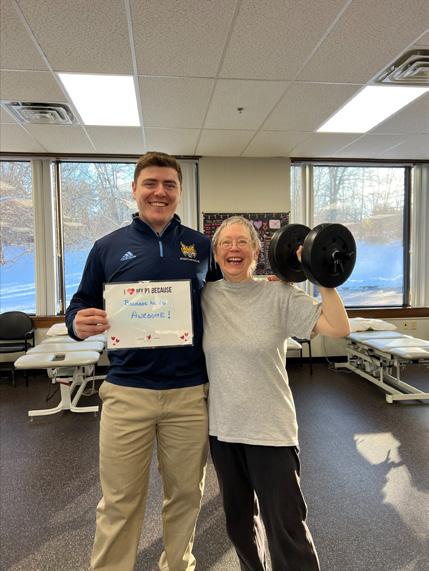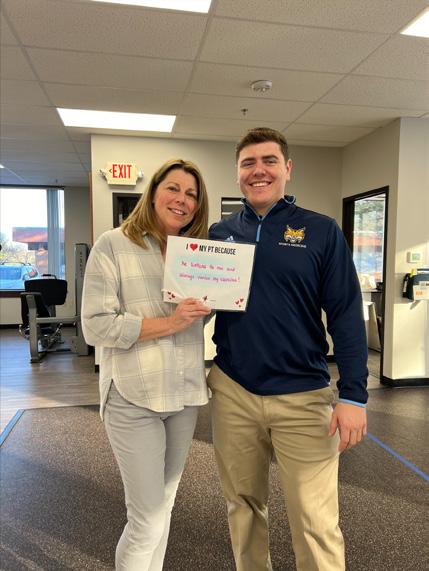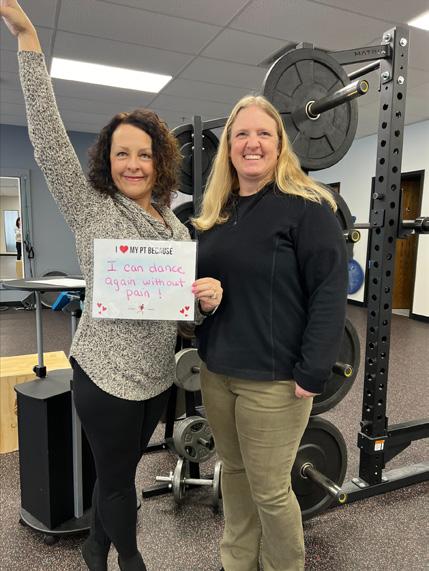




I’ve been writing a PULSE column since our internal newsletter’s inception in 2009. Some of my writing topics are personal, while others are designed to share the “state of PTSMC” as we face challenges and celebrate achievements. Some ideas are mine, and some come from other people. This month, the PULSE committee suggested that I write about “National Employee Appreciation Day.”
To be honest, I didn’t really know much about this nationally recognized day. Given my lack of knowledge, I went to the oracle of the free world…Google. As it turns out, National Employee Appreciation Day was created in 1995 by Dr. Bob Nelson. Some speculate that the day was created in response to “Boss’s Day.” Others are of the opinion that Dr. Nelson created the day to “celebrate the publication of his book 1,001 Ways to Reward Employees and remind managers everywhere of the importance of thanking their employees when they do a good work.”
Based on my limited research, I can assure you that the concept has caught on! There are several websites with suggestions on how to make the rst Friday in March special for employees.
On a conceptual level, I think National Employee Appreciation Day is a great thing! I also admit that I struggle with the idea that a single day can accomplish what is vital in any workplace, every day. In my mind I jumped to Valentine’s Day. I pictured myself in front of my wife of almost 24 years on February 14th each year starting a conversation with,
“Remember about 364 days ago I told you how much I appreciate all the things you do for me and our family? Well, it’s that day again and...” You get the picture!
In my mind, employee appreciation needs to be at the core of a company’s culture, especially in our world. We don’t make and sell a product. Our resource of value is our people and what they are willing to bring to PTSMC and those we serve.
When I think about improving the quality of our people’s lives, a few things come to mind. In my opinion a small gesture such as a sincere “thank you” at the end of a busy day can mean a lot. I also hope PTSMC employees feel the messages of appreciation through our Years of Service recognition, celebrating personal and professional milestones, shout-outs in the PULSE, BRAGS, sta meetings, o ce outings, promotions, bonuses, social hours, and Casino Nights!
I hope you enjoy March 1st, National Employee Appreciation Day. This year we have tied our appreciation with a PTSMC Top Workplace gift. All PTSMC employees will receive a backpack, on or close to National Employee Appreciation Day.
You bring our mission to life every day. You are important and valued as a member of PTSMC every day!
Thanks for all you do,
 Alan
Alan
At PTSMC we strive to provide an inclusive environment that values uniqueness and embraces diversity.
We are committed to promoting a workplace for everyone to feel welcomed, supported, and safe, as well as creating a strong sense of belonging.
Learn more abut the creation of PTSMC’s DEI Commitment Statement by watching Alan’s monhtly video linked on page 6.


Sara

For athletes returning to sport post ACLR, it is important to not only consider their ability to return on physical well-being, but psychological readiness as well. A second ACL injury tends to occur within the rst six months to two years following return to sport.1 Even with RTS testing, 14.4% of those who passed RTS criteria experienced a second ACL injury of either a graft rupture or the contralateral ACL.1 Although there are many variations in RTS criteria and what is expected at discharge; the quadriceps to hamstring strength ratio, single leg hop test, and triple jump tests are the most considered tests for many clinicians. The question is, is this enough?
Webster and Hewett researched the validity of RTS criteria with a systematic review and meta- analysis to determine whether passing RTS test batteries reduced subsequent rates of knee and ACL injury.3 The study took ve databases to nd relevant studies on passing RTS post ACL reconstruction and re-injury data to create a proportional and risk- ratio meta-analysis. Of the 18 studies met the criteria, two studies showed passing RTS test batteries did not statically reduce the risk of further knee injury, and ve studies showed that passing RTS test batteries did not reduce the risk for all subsequent ACL injuries. The analysis did show that individuals who passed RTS test battery did signi cantly reduce the risk for subsequent graft rupture, but it did increase the risk for subsequent contralateral ACL injury. In all studies included, no RTS criteria considered psychological readiness.
Research has shown that there are de cits in strength, landing kinematics, proprioception, phycological readiness and perception of knee function that can persist at two years following ACL reconstruction and may continue up to 20 years post op.1 Losciale et. Al., found in their systematic review with meta-analysis that passing RTS criteria did not show a statistically signi cant association with risk of second ACL injury. What was found through literature review is that psychological readiness and perception of the knee function are vital components when determining RTS readiness.1
Visual motor processing compensations and CNS connectivity alterations following ACL injury may predispose patients to abnormal biomechanics and increase ACL injury risk.1 The article found that despite knowing the connection of the body and mind, more research needs to be done on how including psychological readiness into RTS criteria impacts outcomes post ACLR rehab.
High rates of second ACL injury in young athletes may be driven by a mismatch between RTS rates and psychological readiness to RTS.2 Grindem et. al., found in their systematic review, that allowing 10-11 months prior to RTS, and improving
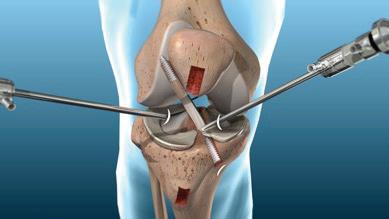
rehabilitation and RTS physiological support, may reduce second ACL injury rates in young athletes with ACL reconstruction.2 This raises the question on why RTS criteria does not consistently include psychological readiness.
The chances of returning to sport at the level once previously participated at is low. Only 65% of patients returned to pre-injury level sport, while only 55% were able to perform at competitive levels.4 These numbers exist with RTS protocol in place for athletes but recall that majority of RTS protocol for ACLR is focused on physical function. With ACL injury, there is shown to be psychological barriers to treatment including anxiety, fear of new injury, reduced con dence, and low motivation.4 These barriers will have an impact on RTS and should not be ignored.
The Journal of Experimental Orthopedics found that psychological readiness is the most important component of a test battery when it came to predicting RTS outcomes.4 The ACL- Return to sports after injury (ACL-RSI) is an outcome measure that should be utilized when dealing with this patient population.4 It consists of three mental domains (emotions, con dence, and risk appraisal) to help bridge the gap between physical and mental readiness to return to play. This article also found that there is low knowledge on interventions for low mental readiness.4
More research needs to be done on how incorporating the ACL-RSI impacts re-injury rate. One cohort study showed that the ACL-RSI scores were correlated to RTS, with 85% sensitivity and 45% speci city. An ACL-RSI score less than 47 indicated the patient was at risk of not returning to sport.5 Although more research is needed on psychological readiness and the impact it has on rate of retear, a major bene t of ACL-RSI is that it provides the clinician a baseline of what RTS odds are for their patient, and ways they can provide services to promote mental well-being if appropriate.
All evidence for PICO was level 2a, showing a need for further investigation on how incorporating psychological readiness in RTS criteria impacts rate of reinjury post ACL reconstruction. When returning an athlete to their sport, consider utilizing the ACL-RSI in your practice to gain a deeper perspective of the patients’ mentality to help optimize patient outcomes and potentially prevent reinjury in the future. Be sure to refer when appropriate, and always remember to consider the patient in a holistic manner.
References:
1. Losciale JM, Zdeb RM, Ledbetter L, Reiman MP, Sell TC. The Association Between Passing Return-to-Sport Criteria and Second Anterior Cruciate Ligament Injury Risk: A Systematic Review With Meta-analysis. J Orthop Sports Phys Ther. 2019;49(2):43-54. doi:10.2519/jospt.2019.8190
2. Grindem H, Engebretsen L, Axe M, Snyder-Mackler L, Risberg MA. Activity and functional readiness, not age, are the critical factors for second anterior cruciate ligament injury - the Delaware-Oslo ACL cohort study. Br J Sports Med. 2020;54(18):1099-1102. doi:10.1136/bjsports-2019-100623
3. Webster KE, Hewett TE. What is the Evidence for and Validity of Return-to-Sport Testing after Anterior Cruciate Ligament Reconstruction Surgery? A Systematic Review and Meta-Analysis. Sports Med. 2019;49(6):917-929. doi:10.1007/s40279-019-01093-x
4. Faleide AGH, Inderhaug E. It is time to target psychological readiness (or lack of readiness) in return to sports after Anterior Cruciate Ligament tears. J Exp Orthop. 2023;10(1):94. Published 2023 Sep 20. doi:10.1186/s40634-023-00657-1
5. Faleide AGH, Magnussen LH, Strand T, et al. The Role of Psychological Readiness in Return to Sport Assessment After Anterior Cruciate Ligament Reconstruction. Am J Sports Med. 2021;49(5):1236-1243. doi:10.1177/0363546521991924
Myopain Dry Needling 2
Foundations II
March 15-17, 2024 at Quinnipiac University
Myopain Pearls & Review
April 27 -28, 2024 at PTSMC Wallingford
Myopain Dry Needling 3
Advanced
May 17-19, 2024 at Quinnipiac University
Lumbar
March 2, 2024 at PTSMC Wallingford
Visit the ERC Clinical Excellence folder for all future course information.
Email ConEd@ptsmc.com to register for PTSMC courses or with any Clinical Excellence questions.
March is a busy month for the Student Program! University partners are reaching out to start working on placements for 2024 and beyond! Over 40 schools currently have clinical contracts with PTSMC and we’d love to keep growing! Are there PT or PTA programs you’d like to work with? Please connect with Juliann Chacko at Juliann.Chacko@ptsmc.com.
Why students love our Student Program:
“The location provided a welcoming sta that made me feel like part of the community within the rst 2 days. I was appropriately challenged and encouraged to get out of my comfort zone often in a manner to foster learning and growth.”
“I was supported each and every day by not only my CI, but all of the sta inside the clinic. If there was ever any confusion that I experienced, all of my questions were answered promptly and insightfully. I was able to practice as much as I needed during my o time as well.”
“I had a great clinical experience. There was an open line of communication between my me and my CI, and he o ered feedback when it was appropriate.”

All meeting are 12:00-1:00 pm on TEAMS.
Upcoming CD dates: 03/05, 04/02
Upcoming JC dates: 03/19, 04/16
Go to the ERC Clinical Excellence Folder for CD & JC 2024 information.
Email Meghan.Blanusa@ptsmc.com to be added to the meeting invites.
Click here to access the ERC Clinical Excellence Folder.
All clinicians are responsible for timely and compliant documentation stanrdards. As a compnay, we perform internal audits to ensure all therapists are complying with these standards. This ensures we are compliant with insurance policies and support the treatment provided.
Congratulations and awesome job to the clinicians listed below who scored 90% or higher in all 2023 audits:
Cait Ayotte, New London
Bri Boulerice, Waterbury
Melissa Boutagy, Guilford
Drew Coisson, New Haven
Jillian Cristaldi, Wethers eld
Roslin Dellavecchia, Watertown
Kathryn Flodquist, Waterbury
Michelle Gallerani, New London
Ann Hall, Essex
Miranda Jasienowski, Groton
Tom Kirsch, Avon
Kenny Kregling, Wallingford
Heather Marosz, Middletown
Sam McMullen, Southington
Cody Morrissey, East Hampton
Erik Olsen, Southbury
Samantha Ostrowsky, Guilford
Jennifer Powers, Fair eld
Stephany Rosza, West Hartford
Liz Rubbo, Guilford
Xani Sanchez, Southington
Stephanie Santos, Watertown
Rebecca Sauve, Naugatuck
Lindsey Scianna, Watertown
Katy Sullivan, Orange

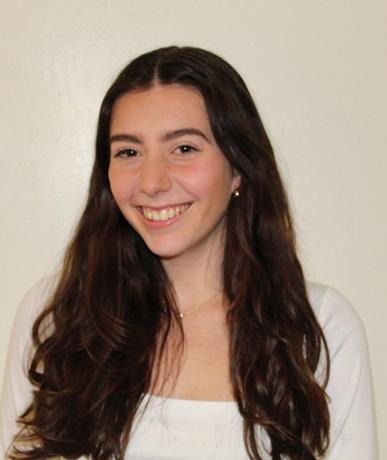
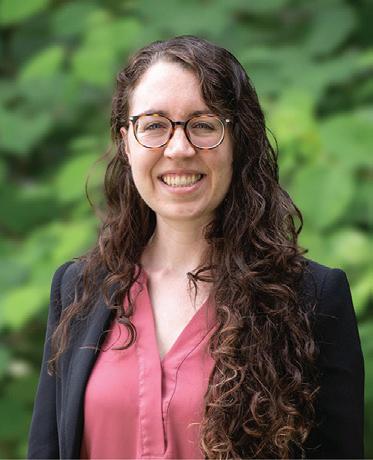

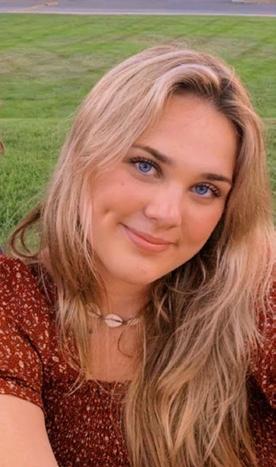
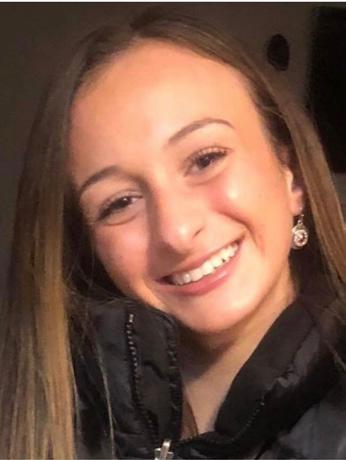


Big shout-out and THANK YOU to the following employees whose referrals and hosting of students led to the addtion of employees to the PTSMC family in 2023!
EMPLOYEE NAME CLINIC REFERRED TO
Amanda Akerley Essex
Samatha Aldrich New Haven
Bridget Bognanno Guilford
Hailey Boulanger Watertown
Stephanie Capito Fair eld
Danielle Casey West Hartford
Kelly Cozzolino Plainville
Amy Demers Branford
Heather Feiner Middletown
Micah Lee Guilford
Shyanne Metzger Putnam
Stephanie Santos Watertown
Katie Scalora Shelton
Michelle Sember Branford
Jilian Spindel Fair eld
Natalie Swanson Lock Street
As a reminder, PTSMC o ers a referral bonus! Click here to view the bonus opportunities for each position.
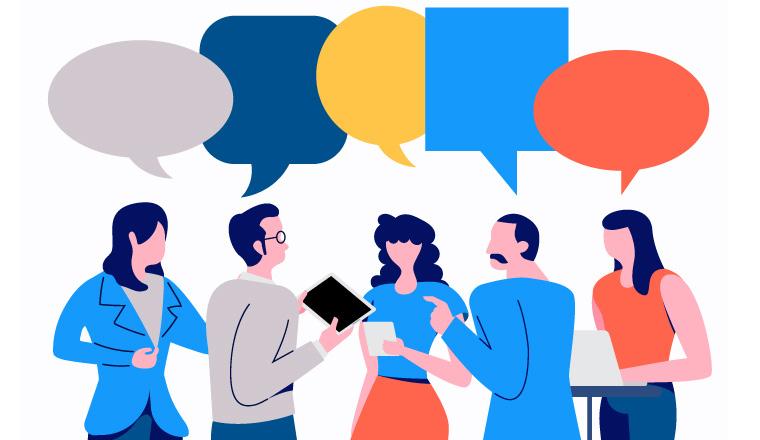
to help and support YOU in any way we can.
Examples of what you may want to discuss are:
• ADP system
• Bene ts
• Policies
• 401(k)
• D4Ds
• SIPTA program
• Upcoming
Essex Middletown
Avon
Bristol
Danbury
Groton
Guilford
Lock Street
New London
Windsor
Orange
Bristol
Danbury
Danielson
Essex
Groton
Guilford
Middletown
Plainville
Putnam
Shelton
Waterbury
Westbrook

 By Mallory Mason, Director of Culture & Engagement
By Mallory Mason, Director of Culture & Engagement
In October of 2021, , Glastonbury Partner, hired his rst sta clinician, Je Hoerst, soon after opening the doors. Je had moved to Glastonbury with his ancé Mary (Wojtowicz) in 2020. Mary had previously worked for PTSMC before heading into hospital-based PT, and always spoke highly of the company. With this personal connection and Glastonbury opening in Je ’s new hometown, it was a no-brainer. He had been practicing for about 3-4 years already and was excited to join a location where he’d be in more of a senior therapist role. Je was most looking forward to living and working in the same community.
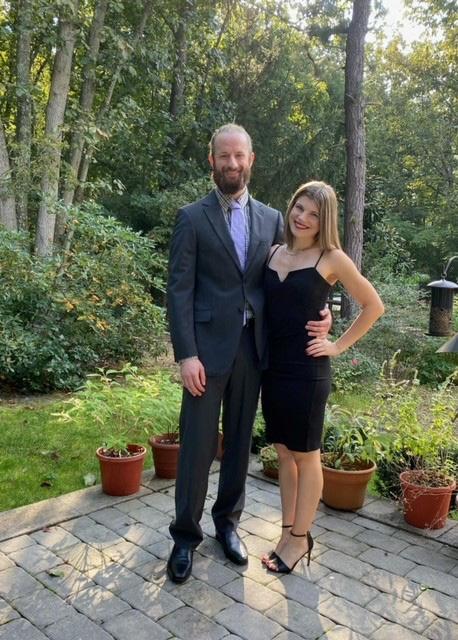
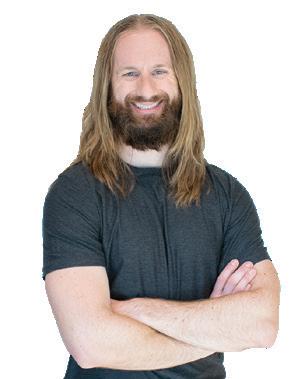
A local running store also sponsors runs that they will jump into. Connecting with people in local groups is something Je is very passionate about. It means a lot to him that growing this outreach translates to both his personal life and to PTSMC Glastonbury.
Aside from running and climbing, he also was a swimmer, loves to play basketball and does mixed martial arts. He’s not all action all the time though. Je loves to read and play video games. However, his favorite thing is spending quality time with Mary and their dogs, Leo and Lilly. They enjoy hiking, long walks in JP Williams Park, and of course, a Starbucks pup cup (for the dogs, not Je ��). Lilly just turned six, and they celebrated with toys and treats. She may not have understood why they were celebrating her, but she was so excited! Je himself also gets to enjoy some treats because Mary bakes multiple times a week. He says it’s very therapeutic for her, and he gets to eat it all!

March birthdays are located in the ERC. Click here to see the list of birthdays.

Olivia Toto PT Aide Guilford
Tori Warner PT Aide New Haven
Makayla Kiss PT Aide Wallingford

Jacky Severance Patient Service Middletown Administrator
Amber Carlbert Physical Therapist Southbury
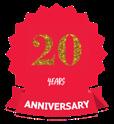
Donna Baribault Senior Veri cation Veri cation Coordinator
Congratulations to the following PT Aides who completed the SIPTA (Skills Introduction for PT Aides) Program:
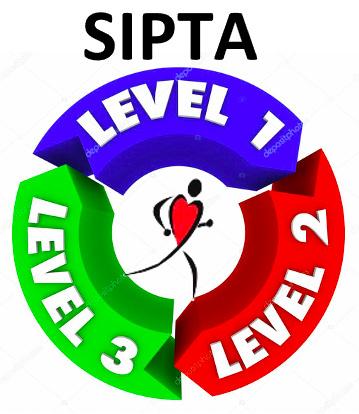
Carmela Badolato, Fair eld
Je loves to be connected to the community around him. He is genuinely so happy to build and live his life in the same community he serves through his workplace. Je and Mary are both very active together and love to be involved in the local happenings. Mary even takes care of the houseplants in the Glastonbury clinic!
Je and Mary also enjoy being physically active together. They live right near a climbing gym. Although Je wouldn’t call himself a “climber,” he and Mary can often be spotted scaling the walls there. They also are involved in the local running community- the Glastonbury River Runners (check out the picture from nishing a recent 10 miler)!
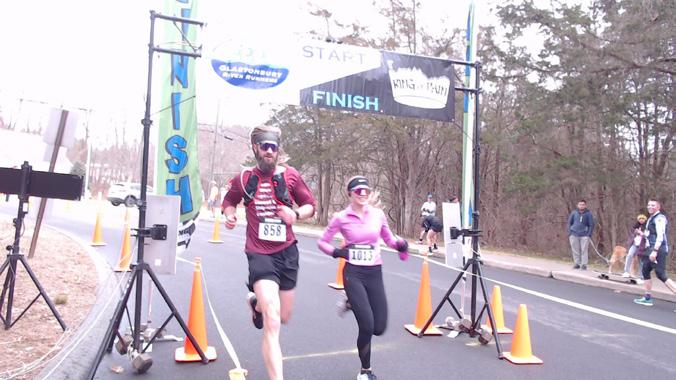
When Je and Mary go on vacation they venture to national parks. At the top of their list for the next excursion is Zion National Park in Utah. Je explains that the most famous hikes there are so well sought after, you have to enter a lottery to get in. Maybe this will be their lucky year! Je is looking forward to more adventures this year with Mary and the dogs, both in their community and around the US.

Wendy Bowden, Westbrook
Olivia Cardillo, New Haven
Victoria Czubat, New Haven
Nicolette Hines, Westbrook
Ty'Lynn Ith, Southbury
Irene Kaupp, Fair eld
Samantha Miller, Southbury
Patrick Pietaszewski, Southington
Sean Ra erty, Branford
Jillian Shapiro, Wallingford
Sophia Starkey, Orange
Abby Swart, Simsbury
All eligible employees will receive their 2023 Safe Harbor employer contribution into their John Hancock account no later than March 15, 2024. Reminder, PTSMC contributes 3% of your total eligible 2023 compensation.
Danielson went all out for Valentine’s Day!
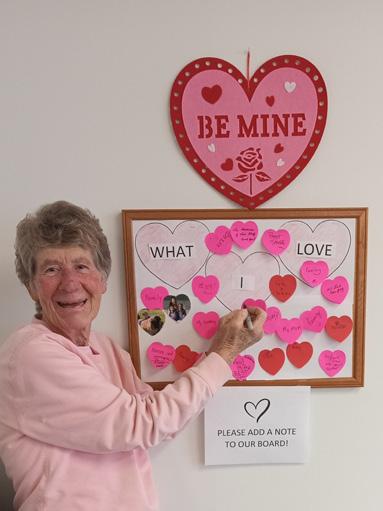
They created a board where patients could share what they loved. Pictured is patient Sue writing what she loves.
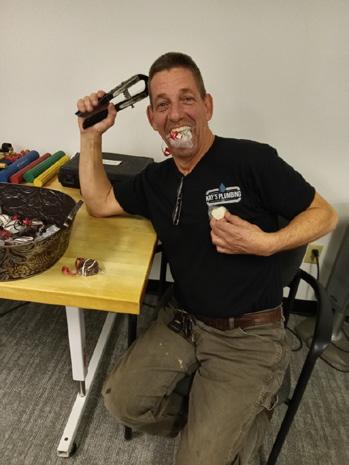

They
a
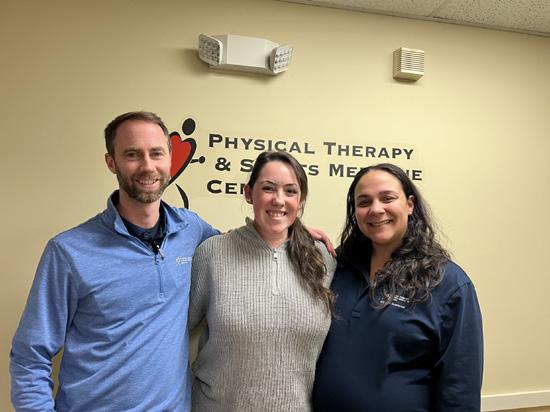
Southington PTs Sam McMullen and Xani Sanchez snapped a photo with their student Jenna Skerritt on Xani’s last day before leave. Jenna o cially joined the sta as Southington's newest PT!
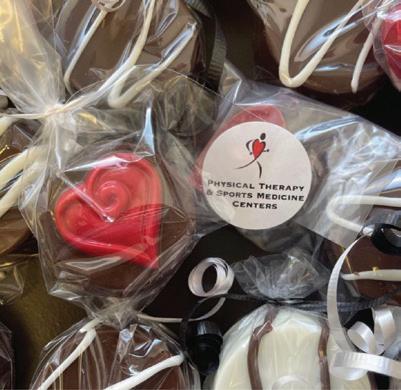
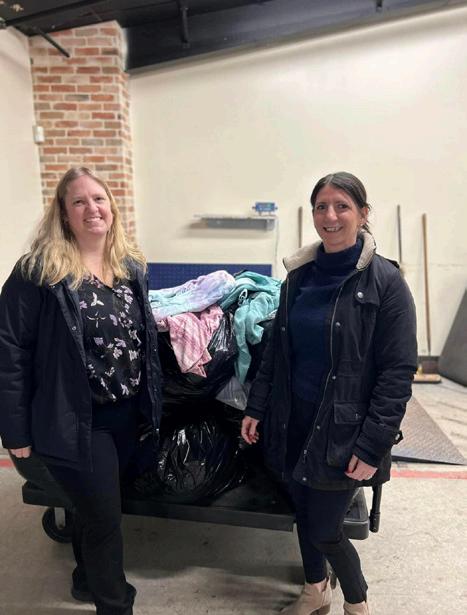
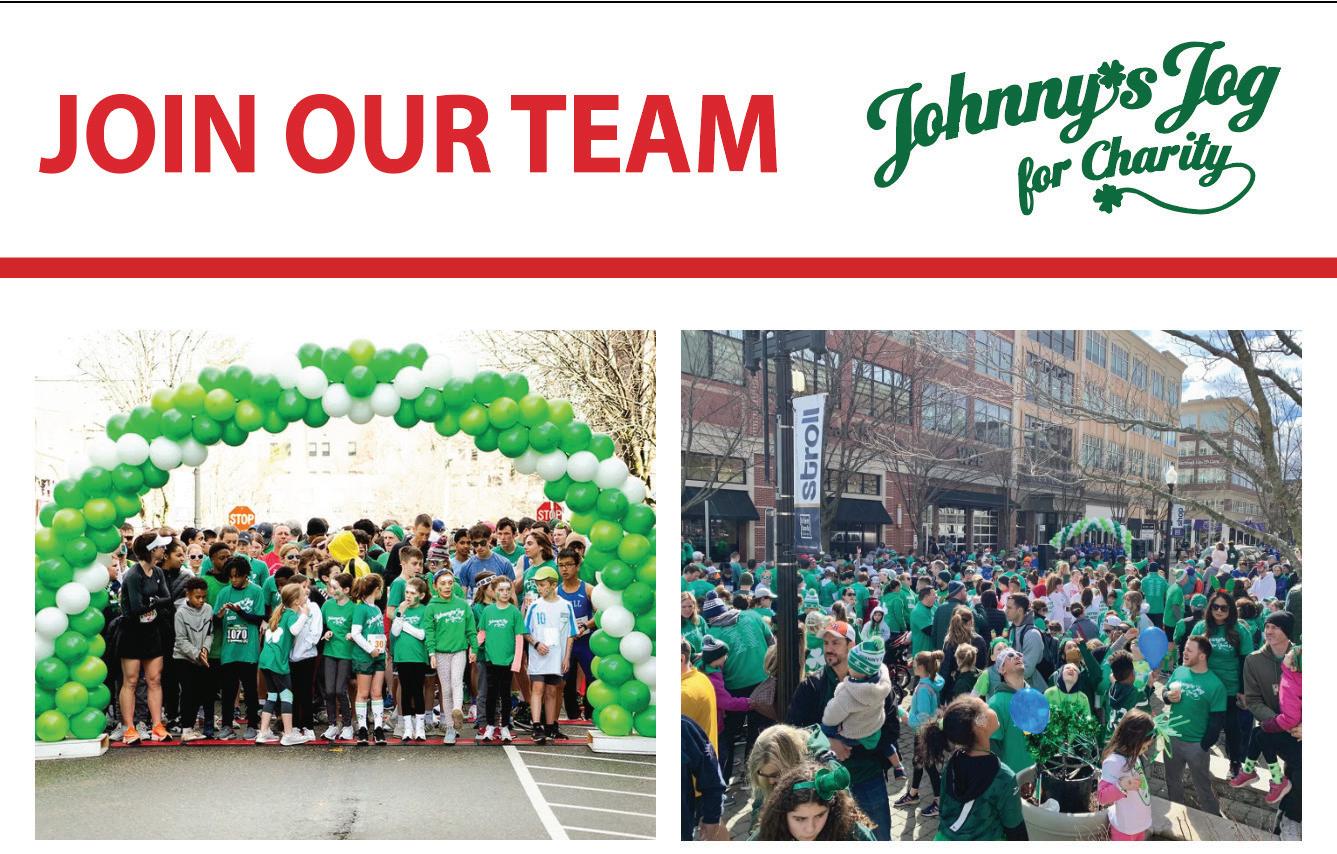
Avon, Newington, Plainville,
March 24th.
and
are running in and
for
March 16 Bristol
Shamrock Shu e
March 23 Naugatuck/Southbury Waterbury/Watertown Shamrock Shu e
March 24 Avon/Newington/Plainville Simsbury/West Hartford
Johnny’s Jog
March 24-27 Practice Liaisons
CT Annual PA Conference
March 25 Meghan Blanusa & Mike McGowan
Spring eld College Career Fair
March 26 Human Resources
NYU Virtual DPT Career Fair
APRIL
April 13 Essex
Essex Steam Train
Half Marathon
April 13 Human Resources
APTA Student Conclave
April 24 Wethers eld Wethers ed HS Career Fair
April 27 Windsor
Race to the Weekend Wheels 5k
Are you participating in an event?
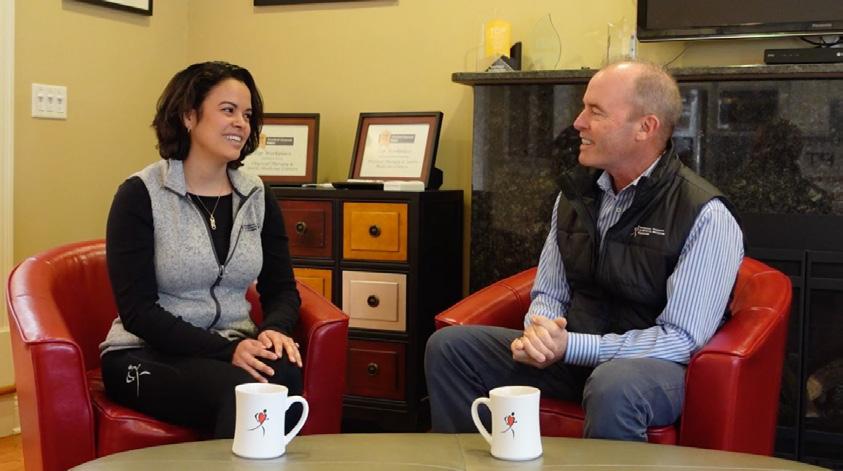
t children’s organizations.
Click here if you would like to donate to or join PTSMC’s walking/running team.

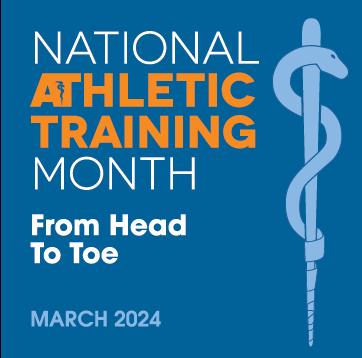
Here are some of our ATs in action.
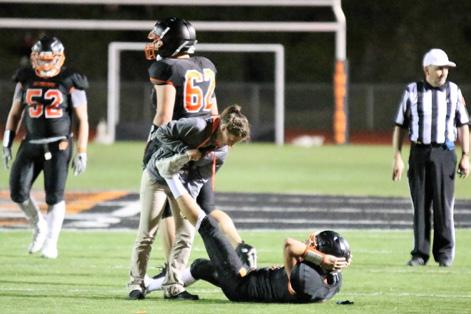
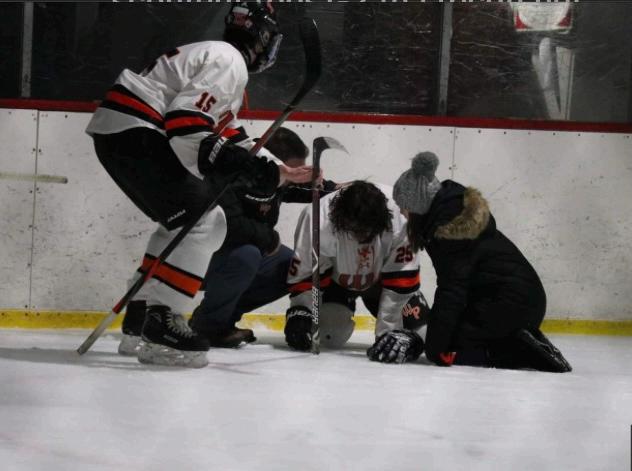

“Everyone has been so helpful, personable & appear to have my best interest as their best interest! A great group! PTSMC is awesome, pleased that I chose them! (Added bonus was when my doctor said "Glad you are going to PTSMC, you're in good hands!")”
- Middletown“The sta at PTSMC are wonderful. I was not sure what to expect for PT, they have been great at explaining the bene ts of the recommended stretches and strengthening exercises and been very helpful! After a month of training, I personally am feeling much better. They take good care of their clients. The facility is very clean and spacious.” - Newington
“Everyone greets patients as they walk through the door and despite who you are working with, everyone engages in conversation with you. There is never a visit when I have not laughed. In addition, Brian (Vo) is attentive and always makes me feel comfortable when I come in.” - Windsor
“Rebecca (Petrosino) listens closely. She is knowledgeable, a seasoned physical therapist, and helping me get stronger. The discomfort has decreased from my hip injury.” - Fair eld
“From my rst appointment on, I felt I was in excellent hands. I was always treated with warmth and respect, and felt that my needs and concerns were a top priority. I can’t imagine a more professional, kind, competent Director/Therapist and sta .”
- Avon

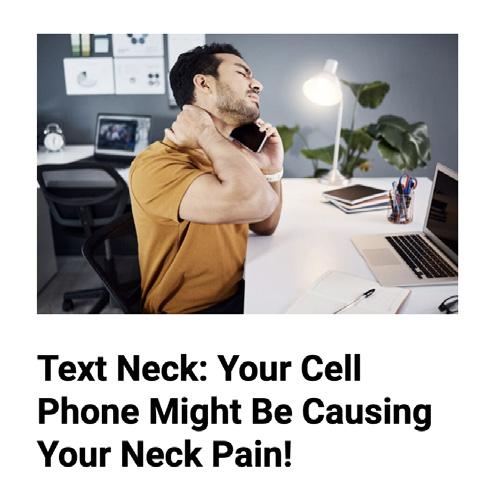




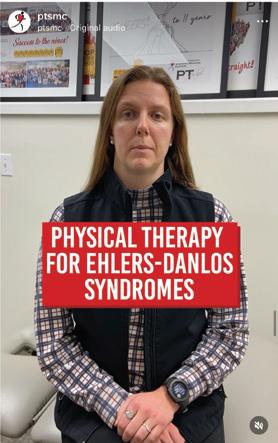

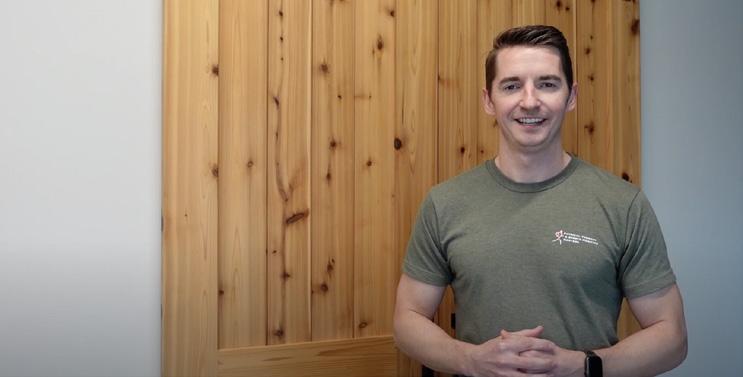 Brian Greer, PT, DPT, Dip. MDT
Brian Greer, PT, DPT, Dip. MDT
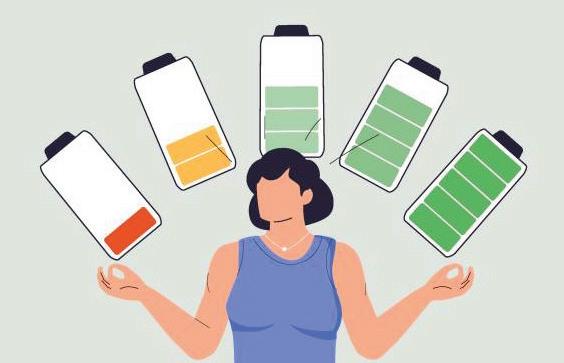
Energy levels uctuate throughout the day based on the body’s circadian rhythms, types of tasks, and environments. When you learn how your natural energy ebbs and ows, you can have more autonomy over your work and life as you set boundaries and create plans. While time is a nite source, energy is renewable.
From a biological perspective, energy is de ned as the ability to perform work or produce a change. There are multiple types of energy that manifest in our bodies.
Physical energy: the stamina required for performing physical activities and involves aspects like sleep, nutrition, exercise, and overall physical well-being.
Mental energy: our alertness and cognitive resources for completing tasks and involves aspects like focus, concentration, creativity, and the ability to engage in cognitive tasks.
Emotional energy: our ability to manage and regulate emotions e ectively, and in uences resilience, motivation, and interpersonal relationships.
Understanding your personal energy patterns, recognizing peak performance times, and implementing strategies to sustain energy levels throughout the day are key to energy management. Here’s how:
• Audit your energy levels: Monitor your energy levels throughout the day to identify your peak energy periods and align your most important tasks with these times.
• Get in your ow state: This is your highly productive state when you are fully immersed in a task, highly focused, and experience heightened levels of creativity. To reach a ow state, engage in your most enjoyable tasks, reduce distractions, and ensure you are striking a balance between a task that is challenging yet manageable.
• Build in rest: Building in time for rest and recovery is just as important as completing a task itself. When you take breaks—whether to walk, eat a snack, nap, or unplug, you can recharge and replenish energy levels.
• Take care of your health: Maintain your overall well-being by practicing healthy habits such as exercising, eating nutritious foods, managing stress, and ensuring adequate sleep.
When possible, tuning into your own physical, mental, and emotional energy helps prevent burnout, enhances focus, fosters resilience, and enhances productivity.
Well-being Theme: Your Energy
National Employee Appreciation Day: March 1
March Madness Bracket Challenge
Virtual DEI Forums: 3/26 at 12pm & 6:30pm, 3/27 at 1:30pm
APRIL
Well-being Theme: Manage Your Mind
Virtual DEI Forum: 4/12 at 12pm
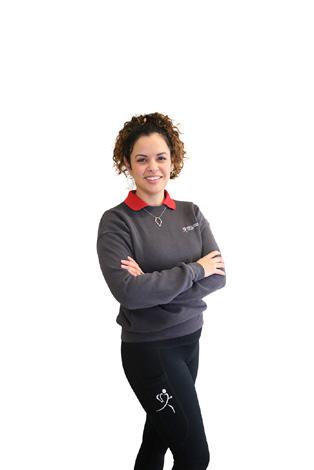
Did you know that Physical Therapy in the U.S. started as a female only profession? During World War I, after being trained in England, Mary McMillan returned to the U.S. to work alongside physical education graduates to rehabilitate war survivors. In 1918 she became the very rst o cial reconstruction aide (or “re-aide”) in the U.S. She then went on to train other women in this role. There was great need at the time for rehabilitation due to a polio outbreak and World War I.

Mary established the American Women’s Physical Therapeutic Association (AWPTA) in 1924 with 274 charter members. She has since been considered the “founding mother” of PT. The AWPTA was initially a women’s only health profession. In 1922, the AWPTA changed its name to the American Physiotherapy Association (APA) to invite men to join.
Game on, it’s bracket time! NCAA Women’s and Men’s Basketball tournaments take place this month, so it’s time for an inter-clinic competition. Each clinic can enter 1 bracket for the Women’s and 1 bracket for the Men’s tournament. The WINNING clinic of each tournament will receive a sta lunch.
Be sure to post your bracket in the clinic for patients to engage in as well!
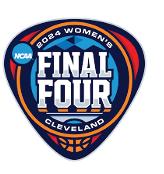

Women’s:
Click here to study up with Bracketology
Selection Show: March 17
“First Four” March 20-21, First Rounds March 22-23
Final 4 & Championship: Cleveland, OH, April 5 & 7
Click here to start your clinic’s bracket. | PW: PT4life
Men’s:
Click here to study up with Bracketology
Selection Show: March 17
“First Four” March 19-20, First Round March 21-22
Final 4 & Championship: Glendale, AZ, April 6 & 8
Click here to start your clinic’s bracket. | PW: PT4life
Brackets must be completed Before the commencement of each tournament’s rst round. Standings can be seen live through the PTSMC bracket groups via ESPN and will be emailed out after the conclusion of each round.
Email Mallory.Mason@ptsmc.com with any questions. Good luck!

 Kristen Forster, Director of Operations
Kristen Forster, Director of Operations
Dear PTSMC Team,
I hope this message nds you well. As a current PTSMC patient, I've had the unique opportunity to experience our patient processes rsthand.
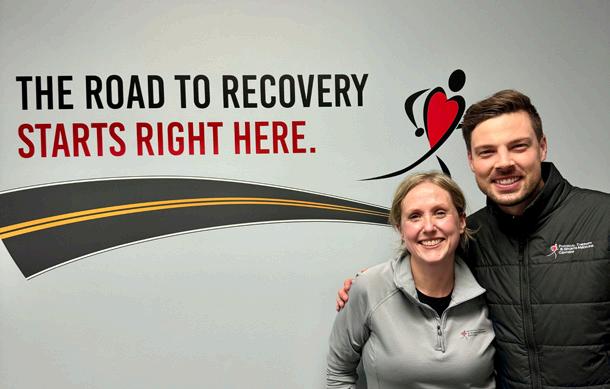
From the initial paperwork and insurance details to coordinating rides and appointments when I couldn't drive, it was a lot to handle. Fortunately, I am incredibly lucky to have an amazing support system, including my family and the dedicated professionals here at PTSMC who go above and beyond to take care of me.
Throughout my recovery journey, I've come to realize the challenges of balancing work, life, and physical therapy. While I eagerly anticipate my therapy sessions and recognize their importance in my healing process, the reality is that life doesn't always align perfectly with our scheduled appointments. As a working parent, it became apparent that I needed a scheduling approach that accommodated my responsibilities without causing disruptions.
On my rst day, my well-intentioned mother took charge and scheduled all my appointments for the next month – all during my work hours. While her intentions were to assist, it led to a series of challenges, including rearranging meetings, extending my workday, and coordinating rides for my daughter. I found myself becoming the patient no one wants to be –constantly needing to reschedule and inconveniencing everyone involved.
This experience prompted me to re ect on the importance of thoughtful appointment scheduling. Realizing that the key to a successful and stress-free experience lies in scheduling sessions at convenient times, I took the time to plan out the remainder of my care. By aligning appointments with my availability, I could commit to attending each session without the need for frequent rescheduling.
I understand that scheduling can be a time-consuming process, and nding the perfect times may be challenging. However, I can attest that the investment is well worth it. When appointments are thoughtfully scheduled and convenient for the patient, the likelihood of them showing up consistently increases.
I encourage you to take the time to work with your patients to schedule their entire plan of care in a way that suits their lives. A well-thought-out schedule not only makes it easier for patients to attend their sessions but also contributes to a more positive and successful rehabilitation journey. Thank you for your continued support and commitment to our well-being.
Best regards,
 Kristen Forster, A Grateful PTSMC Patient
Kristen Forster, A Grateful PTSMC Patient
In last month’s PULSE, we asked for your interest and input on ERGs and ESGs. Thank you to all who took the time to ll out the survey! Here are those survey responses with some requested information.
When asked if interested in participating in an ERG or ESG: 0% of participants responded no 35% (ERG) and 50% (ESG) participants responded YES 65% (ERG) and 50% (ESG) wanted more information
Our top 5 topics of interest for employee groups are as follows:
Meet ups
Mental Health & Wellness
Book Club
Sports & Exercise
Professional Development
The top 2 preferred digital methods of communication:
Microsoft TEAMS
Facebook Groups
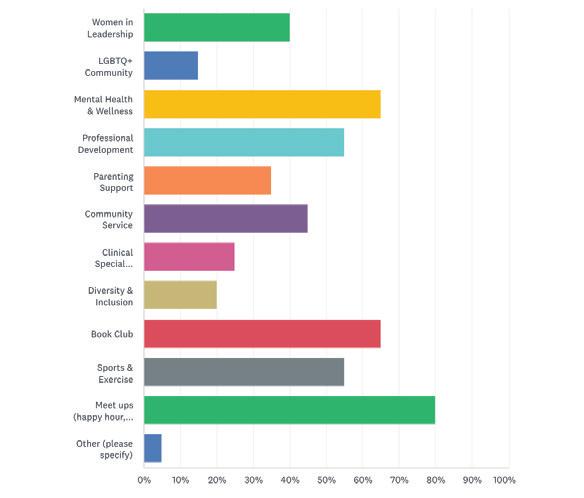
Here is a summary of the open-ended question: For future PTSMC event planning, what are some of your personal and professional interests?
Running, races, sporting events, tness classes, hiking
Social meetups such as paint nights, baking/cooking, family days, festivals, crafts, book clubs
Community events, community service and volunteer opportunities
Professional interest includes women’s health, sports injuries, post-op rehab, collegiate PT education, vestibular, research
So, what does this tell us? Our people are looking for opportunities to CONNECT! There are over 400 people who work for PTSMC. Odds are (and survey results support) there are multiple people you already are connected to who also enjoy the same books, exercise routine, sports team, or passion for vestibular cases!
This connection could only enhance your life inside and out of work. It's clear from the survey response that there is a desire to have a few organized groups. So, why not?
Let’s go for it!
The next step we will be taking is reaching out to those who are interested in possibly leading an ERG or ESG. Then, we will organize communication channels and plan meet-ups this year so we can help connect you all to each other. Reach out to me, Marilex Santiago, with any questions, ideas or to join in on a future group.
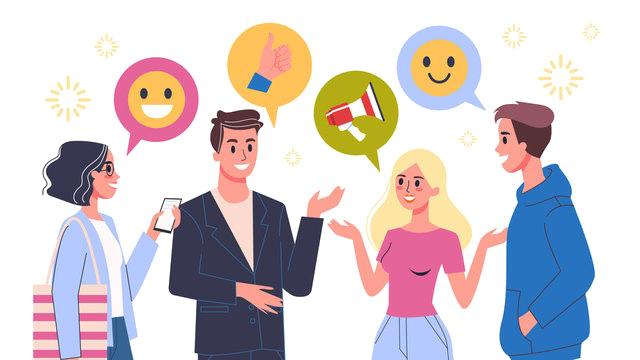 Kristen with Guilford PT Quinn McAnaney
Kristen with Guilford PT Quinn McAnaney
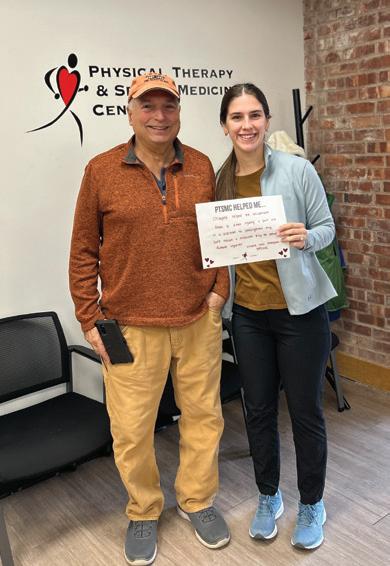
Chaylea helped me recuperate from a knee injury + put me in a position to strengthen my soft tissue to prevent future injures.


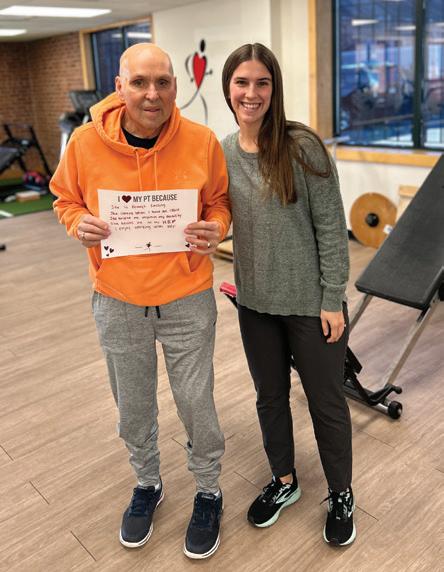
• Helped me strengthen my balance
• Encouraged me to push 100lbs. on the sleigh
• Strengthened my knees and ability to get out of a chair easier

She is always smiling. She listens when I have an issue. She helped me improve my mobility. She advises me on my HEP. I enjoy working with her.

I love the whole Branford sta .
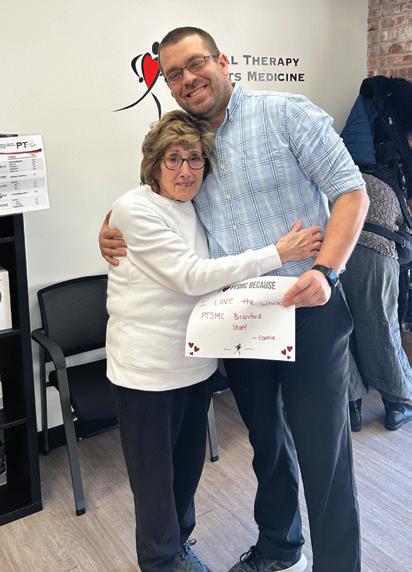


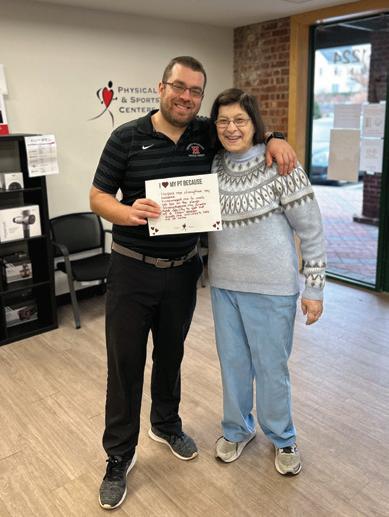


• Gives me activities to help me at home


He’s always there for me when I reinjure my body parts!


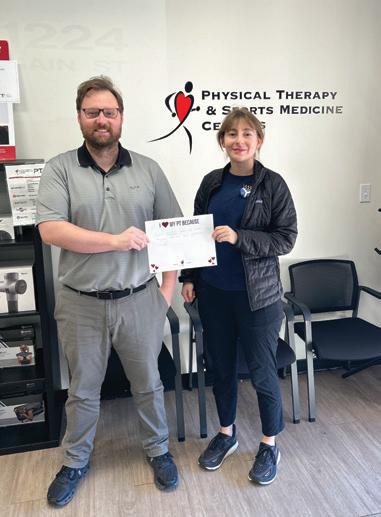

Colin never gives up with trying to x his patients’ issues


Colin is attentive + compassionate always


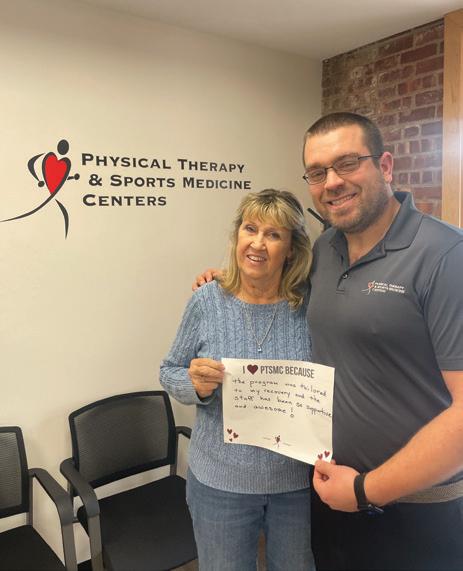
The program was tailored to my recovery and the sta has been so supportive and awesome!



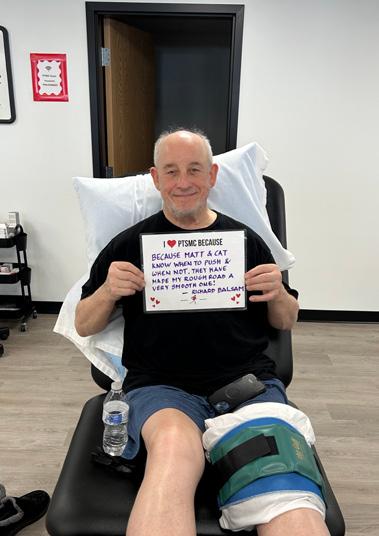
Because Matt & Kat know when to push & when not. They have made my rough road a very smooth one!


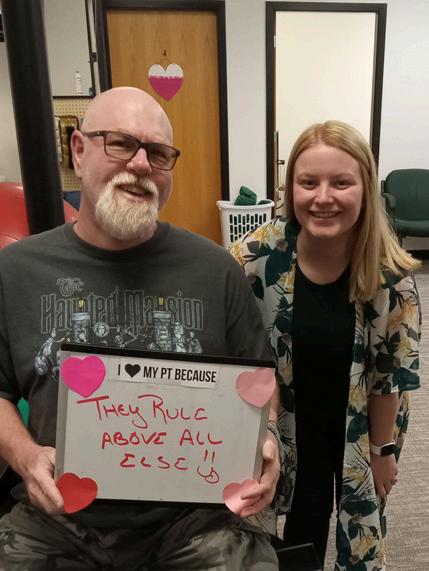

They help me with my shoulder, knee, back, neck, and pretend to alugh at my jokes.



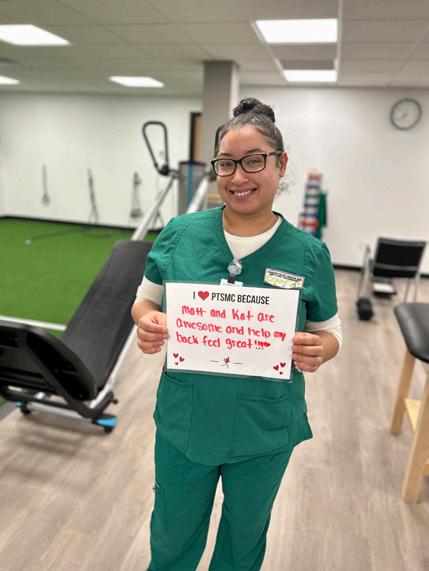

Restore my con dence physically and mentally


She is awesome and funny and nice. She is helpful and understanding.

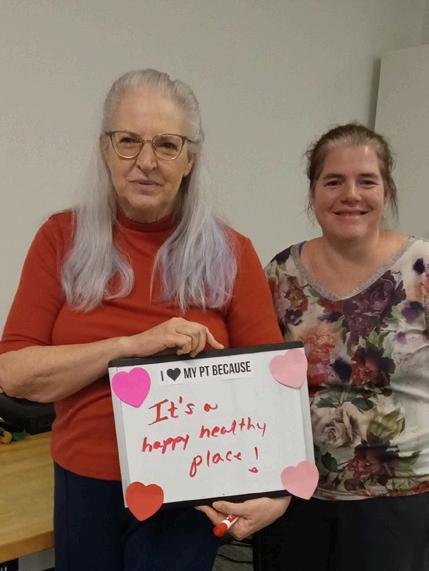







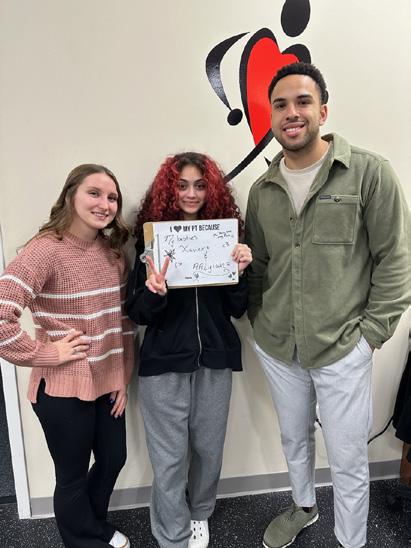



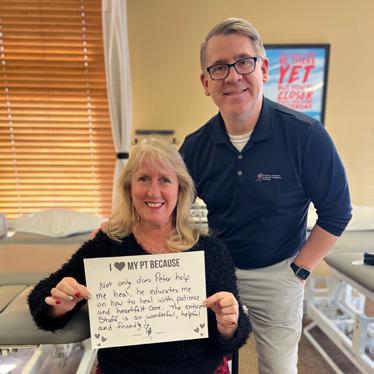


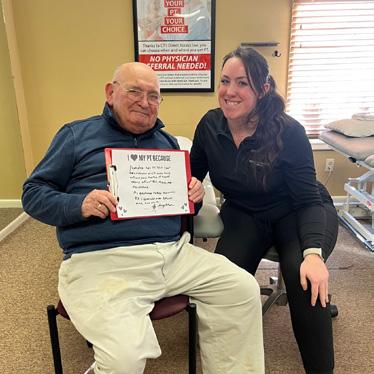


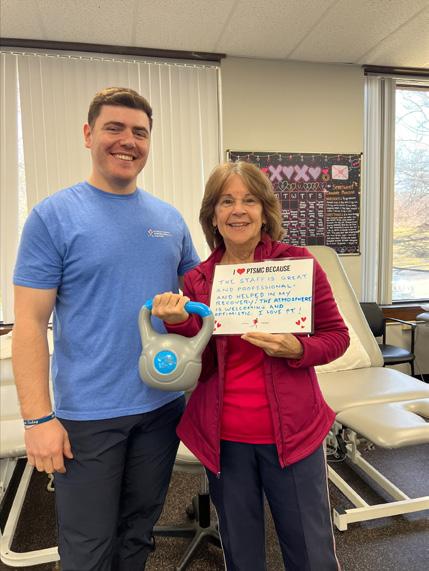


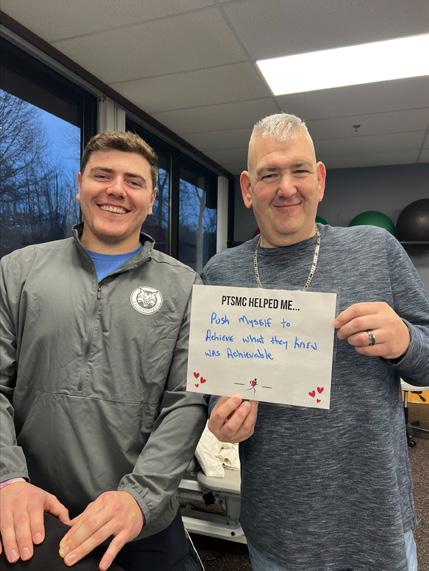


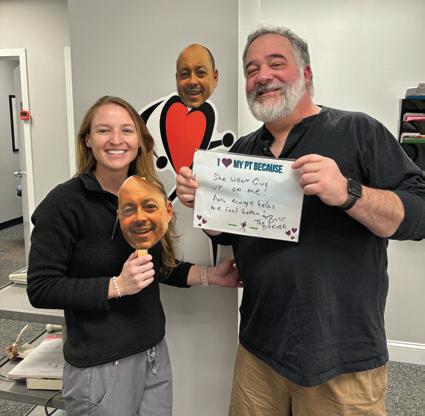


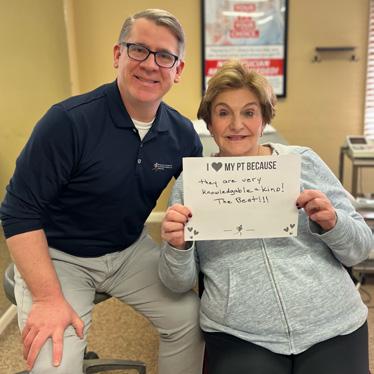


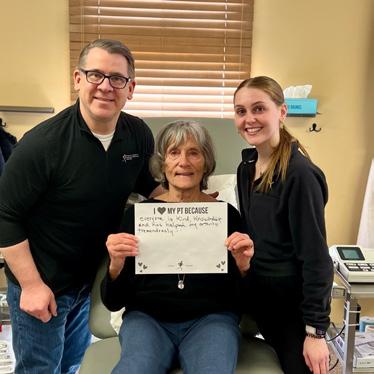
Everyone


